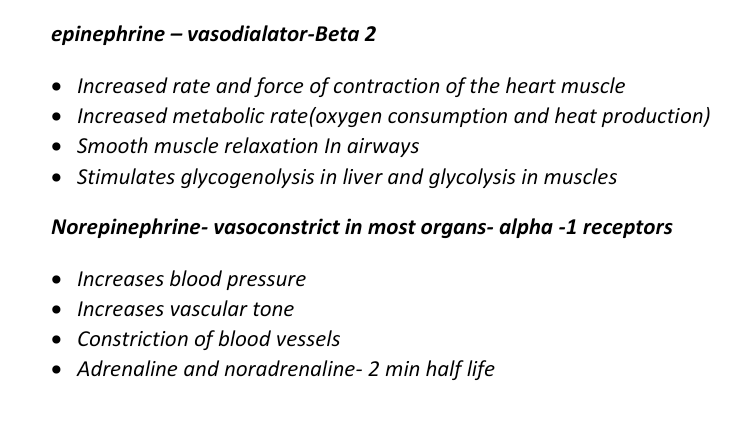13 - Functional morphology of the adrenal glands. Hormones of the adrenal medulla. Physiological effect and control of secretion of epinephrine and norepinephrine.
1/7
There's no tags or description
Looks like no tags are added yet.
Name | Mastery | Learn | Test | Matching | Spaced |
|---|
No study sessions yet.
8 Terms
sections
amount of adrenal glands, location and surrounded by
parts of adrenal gland
3 zones of adrenal cortex and what they produce
adrenocorticotropic hromone
two catecholamines of adrenal medulla
tyrosine
phsyiological effect and control fo secretion of epinephrine and norepinephrine
amount of adrenal glands, location and surrounded by
There are two adrenal glands
located above each kidney
surrounded by a fatty capsule
parts of adrenal gland
Each adrenal gland is composed of two parts:
outer adrenal cortex
inner adrenal medulla
3 zones of adrenal cortex and what they produce
outer zone- mineralocorticoids (i.e. aldosterone – for regulation of salt and water levels in body which regulated blood pressure, Aldosterone acts on certain cells in the kidneys to increase their reabsorption of sodium ions from the urine.)
middle zone- glucocorticoids (e.g. cortisol - involved in stress response and regulates body metabolism- fats, resist stress, antinflamm)
Inner zone- androgens (eg. Testosterone- growth and male characteristics).
adrenocorticotropic hromone
secreted by the anterior pituitary gland, binds to receptors on adrenocortical cell of the adrenal cortex and stimulates secretion of cortisol- which helps to regulate body metabolism.
two catecholamines of adrenal medulla
norepinephrine and epinephrine.
These hormones participate in establishing characteristics of the fight or flight stress response
tyrosine
Tyrosine is taken up by chromaffin cells in the medulla
Tyrosine converted to norepinephrine and epinephrine.
Tyrosine→dopa→dopamine→norepinrphine→epinephrine
phsyiological effect and control fo secretion of epinephrine and norepinephrine
The secretion of these hormones is stimulated by the release of acetylcholine from preganglionic sympathetic fibres which innervate the medulla.
Trauma, Exercise and hypoglycaemia are factors which can trigger the release of these hormones.
Once secreted, the hormones bind to a-1, 2 and B 1,2, 3adrenergic receptors on target cells
to induce the same effect as that of direct sympathetic nervous stimulation.
physiologic effects of epinephrine from the epinephrine secreting cells and norepinephrine :
A and NA increase blood pressure by increasing heart rate and constricting blood vessel
increase breathing rate
dilate respiratory passageways
decrease the rate of digestion
increase the efficiency of muscular contractions
increase blood sugar level, and stimulate the cellular metabolism
increase lipolysis
